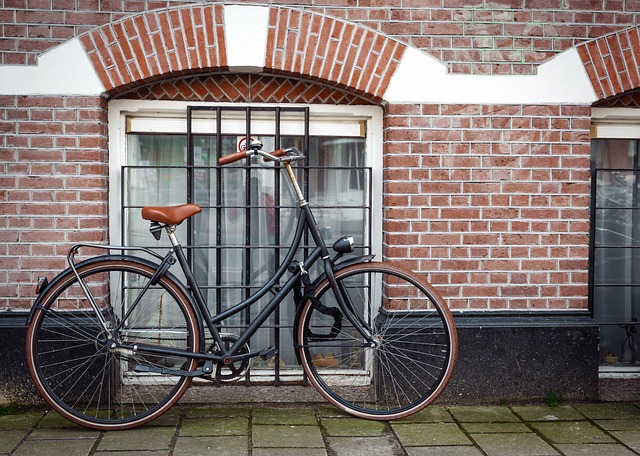Public Transportation Options and How to Get Around: A Comprehensive Guide

Navigating a new city or country can be both exciting and daunting, especially when it comes to figuring out how to get around efficiently. Public transportation is often the backbone of urban mobility, offering affordable, eco-friendly, and convenient ways to explore your surroundings. Whether you’re planning a trip to a bustling metropolis or a quaint town, understanding the available public transit options will enhance your travel experience. In this guide, we’ll break down the most common modes of public transportation and provide tips on how to use them effectively.
1. Buses: The Versatile Workhorse
Buses are one of the most widespread forms of public transportation worldwide, connecting neighborhoods, suburbs, and even distant towns. They are flexible, affordable, and accessible, making them an excellent choice for travelers.
How to Use Buses Effectively:
- Plan Your Route: Use apps like Google Maps, Citymapper, or local transit authority websites to find bus routes, schedules, and stops.
- Purchase Tickets in Advance: Many cities offer prepaid cards, mobile apps, or ticket machines at bus stops. Avoid paying cash onboard unless explicitly allowed.
- Know the Etiquette: Always validate your ticket upon boarding (if required), and give up your seat to elderly or disabled passengers.
- Pro Tip: If you’re unfamiliar with the area, sit near the driver and ask for help when approaching your destination.
2. Trains and Subways: Speed and Efficiency
Trains and subways are ideal for covering longer distances quickly, especially in large cities. They are typically faster than buses due to dedicated tracks and fewer stops.
Types of Rail Systems:
- Subway/Metro: Underground rail networks found in major cities like New York, London, Tokyo, and Paris.
- Commuter Trains: Connect urban centers with surrounding suburbs.
- High-Speed Trains: Perfect for intercity travel, such as Japan’s Shinkansen or Europe’s TGV.
Tips for Train Travel:
- Buy Tickets Early: For high-speed trains, booking in advance often saves money and guarantees a seat.
- Understand Zones: Many train systems operate on zone-based pricing; ensure you purchase the correct fare for your journey.
- Mind Peak Hours: Avoid rush hours (usually 7–9 AM and 5–7 PM) if possible, as trains can become overcrowded.
- Stay Alert: Keep an eye on station announcements or digital displays to avoid missing your stop.
3. Trams and Light Rail: Scenic and Convenient
Trams and light rail systems combine the best of buses and trains, operating on fixed tracks but navigating smaller streets. Cities like Melbourne, Lisbon, and San Francisco boast iconic tram networks that double as tourist attractions.
Why Choose Trams?
- They’re slower than subways but offer picturesque views of the cityscape.
- Stops are frequent, making them beginner-friendly.
- Often powered by electricity, they’re environmentally friendly.
Tips for Riding Trams:
- Validate your ticket at the start of your ride.
- Check whether trams run on dedicated lanes or share roads with cars—this affects their speed and reliability.
4. Ferries and Water Taxis: Unique Urban Experiences
In coastal cities or those built on waterways, ferries and water taxis are essential modes of transport. Examples include Venice’s vaporettos, Sydney’s ferries, and Istanbul’s Bosphorus boats.
Advantages of Water Transport:
- Offers stunning views of waterfront landmarks.
- Often less crowded than land-based options.
- Provides a refreshing breeze during hot summer months.
Tips for Ferry Travel:
- Arrive early, as popular routes can fill up quickly.
- Check weather conditions; rough seas may cause delays.
- Consider purchasing multi-day passes if you plan to use ferries frequently.
5. Ride-Sharing and Bike Rentals: Modern Alternatives
While not traditional public transportation, ride-sharing services (like Uber, Lyft, or Grab) and bike rentals have become integral parts of urban mobility.
Ride-Sharing:
- Great for late-night travel or areas underserved by public transit.
- Use apps to compare prices and choose shared rides for cost savings.
Bike Rentals:
- Ideal for short trips and sightseeing.
- Many cities now offer dockless bikes or e-scooters via apps like Lime or Bird.
- Always wear a helmet and follow traffic rules.
6. Walking: The Underrated Option
Sometimes, the best way to explore a city is on foot. Walking allows you to soak in details you might miss while speeding past in a vehicle.
When to Walk:
- In compact, pedestrian-friendly districts like Old Towns or historic quarters.
- When distances are short enough to cover comfortably within 20–30 minutes.
- To save money and reduce your carbon footprint.
Walking Tips:
- Wear comfortable shoes and carry a map or GPS-enabled device.
- Be mindful of local pedestrian laws and crosswalk signals.
- Stay hydrated, especially in warm climates.
7. Taxis and Auto Rickshaws: Flexible but Costly
Taxis and auto rickshaws (tuk-tuks) are readily available in many cities, providing door-to-door convenience. However, they tend to be more expensive than public transit.
Using Taxis Wisely:
- Opt for metered taxis whenever possible to avoid overcharging.
- Negotiate fares upfront if meters aren’t used.
- Download reputable taxi apps for safer and hassle-free rides.
Auto Rickshaws:
- Common in South Asia and parts of Southeast Asia.
- Fun and adventurous but negotiate prices before starting your ride.



